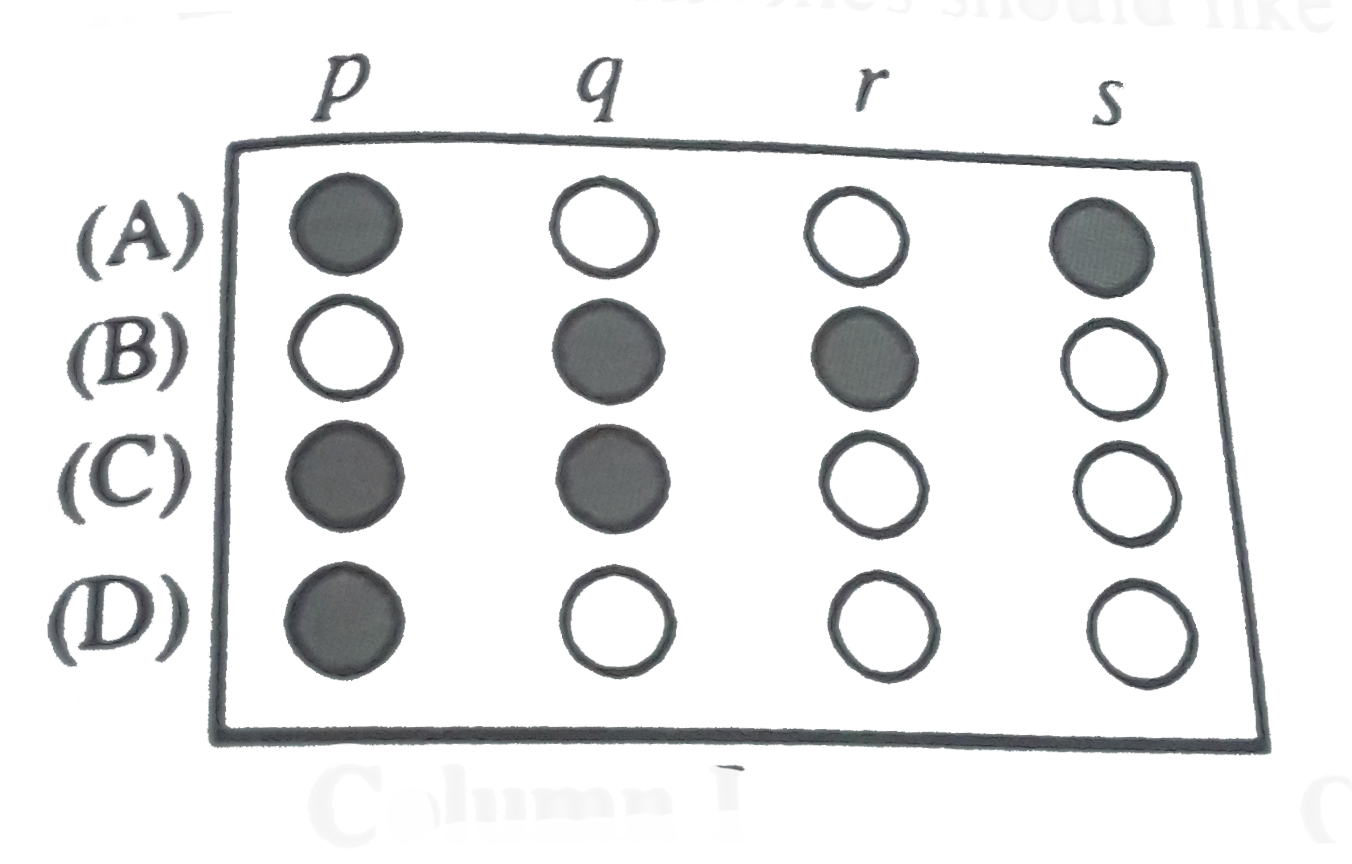COLUMN-ICOLUMN-II(A)SO2(p)+2 and '0' states of 'S' (B)H2S(q)Trimer solid(C)SO3(r)Reductant(D)S6O(s)Oxidant(t)sp2sulphur Solution in Telugu
The correct Answer is:A-r,s,t; B-r; C-q,s,t; D-p,r,st
A-r,s,t- SO2 - Act as reductant. Oxidant and the sulphur. Undergo sp2 hybridisation
B-r - H2S - It act as only oxidant
C-q,s,t - SO3 - In the solid state it exist as Trimer (S3O9). It act as oxidant and undergo sp2 - hybridization.
D-p,r,s,t
Topper's Solved these Questions
- BOOK - AAKASH SERIESCHAPTER - VIA GROUP ELEMENTSEXERCISE - LEVEL-II LECTURE SHEET (EXERCISE - IV Integer answer type Questions)9videos
VIA GROUP ELEMENTS
- BOOK - AAKASH SERIESCHAPTER - VIA GROUP ELEMENTSEXERCISE - PRACTICE SHEET - 1 (Single or more than one option questions)16videos
VIA GROUP ELEMENTS
- BOOK - AAKASH SERIESCHAPTER - VIA GROUP ELEMENTSEXERCISE - LEVEL-II LECTURE SHEET (EXERCISE-II Linked Comprehension type questions )31videos
VIA GROUP ELEMENTS
- BOOK - AAKASH SERIESCHAPTER - VA GROUP ELEMENTSEXERCISE - PRACTICE EXERCISE51videos
VA GROUP ELEMENTS
- BOOK - AAKASH SERIESCHAPTER - VII GROUP ELEMENTSEXERCISE - OBJECTIVE EXERCISE -455videos
VII GROUP ELEMENTS
Similar Questions
The atomicities of oxygen and sulphur are different. What is the ratio of the atomicities of sulphur to oxygen ?
View SolutionThe valency of sulphur in SO2−4 is :
02:07View SolutionPassage-I :
Metallic sulphates can be obtained by reacting the metals (above hydrogen in ECS), or its oxide, hydroxide or carbonate with dil. H2SO4. Group IA metals also form hydrogen sulphates which can be isolated in solid. In general metal sulphates are soluble in water and crystallize with water of crystallization. Sulphates are thermally more stable than nitrates.
Among the metals given below, which metal will not give its sulphate on treatment with dil. H2SO4.View SolutionWhich of the following reacts rapidly with oxygen in the air at ordinary temperature?
06:51View Solution(A): The bond dissociation energy of fluorine is less than bromine.
(R): In fluorine molecule, large lone pair electronic repulsions and appreciable internuclear repulsions are present.04:35View SolutionColumn-IColumn-II(A)Insoluble in H2O(P) Whit phosphorous(B)Insoluble in CS2(Q) Red phosphorous(C)Soluble in H2O(R) Rhombic sulphur(D)Soluble in CS2(S) Br2(T) I2
02:54View SolutionFind out the oxidation number (O.N.) of S in (a) H_(2)S (b) SO_(2) (c) SO_(3) (d) SO_(3)^(2-) .
View SolutionMatch the species listed in column-I with the characteristics/propertie listed in column-II. {:("Column-I","Column-II"),((A)C_2,(p)"Diamagnetic"),((B)N_2,(q)"Undergoes oxidation"),((C )O_2^(2-),(r)"Undergoes reduction"),((D )F_2,(s)"Bond order"ge2),(,(t)"No mixing of 's' and 'p' orbitals"):}
02:42View SolutionHere each question contains statements given in two column which have to be matched. Statements in columns I are labelled as A, B, C and D where as the statements in column II are labelled p, q, r and s. The answers to these questions are to be appropriately bubbled as illustrated in the following example.
If the correct matches should like the following.

Column IColumn II(A)SO2(p)Basic(B)H2SO4(q)Acidic(C)HNO3(r)Reducing(D)NH3(s)Oxidizing02:24View Solutionनिम्नलिखित यौगिकों में से S की ऑक्सीकरण अवस्था क्या है ?
(a) PbS (b) SO2
(c ) SF6 (d)Na2S2O3
(e ) H2SO301:12View SolutionMatch the entires of Column I with appropiate entires of column II and choose the correct option out of the four option (a) ,(b) ,(c ) (d) given at the end of each question
column I (Compound)column II (Oxidation numbers of S atoms)(A)Na2S2(p)+6(B)Na2S2O3(q)−1−1(C)Na2S(2)O7(r)+6+6(D)H2SO4(s)−2+401:09View SolutionMatch Column -I with Column -II {:("Column-I","Column-II"),((A)"Sorel's cement",(p)MgCl_(2)),((B)"Albite",(q)MgO),(( C)"A salt of carnallite",( r) NaAlSl_(3)O_(8)),((D)"Glauber's salt",(s) Na_(2)SO_(4).10H_(2)O):}
01:52View SolutionMatch the following
COLUMN-ICOLUMN-IIA)F2Op)SP2−HybridisationB)ClO2q)SP3−HybridisationC)BrF3r)SP3d2−HybridisationD)IF5s)SP3d−Hybridisation02:14View SolutionCOLUMN-ICOLUMN-IIA)PCl5p)sp3B)ClO−4q) TetrahedralC)XeF2r) Trigonol bipyramidalD)SO−24s)sp3d
02:55View Solution{:("COLUMN-I","COLUMN-II"),((A)"Crown shape",(p)S_(2)Cl_(2)),((B)"Angular shape",(q)S_(8)" molecule"),((C )"Planar trigonal",(r )O_(3)" molecule"),((D) H_(2)O_(2)" like structure",(s) SO_(3)" molecule"):}
02:22View Solution
